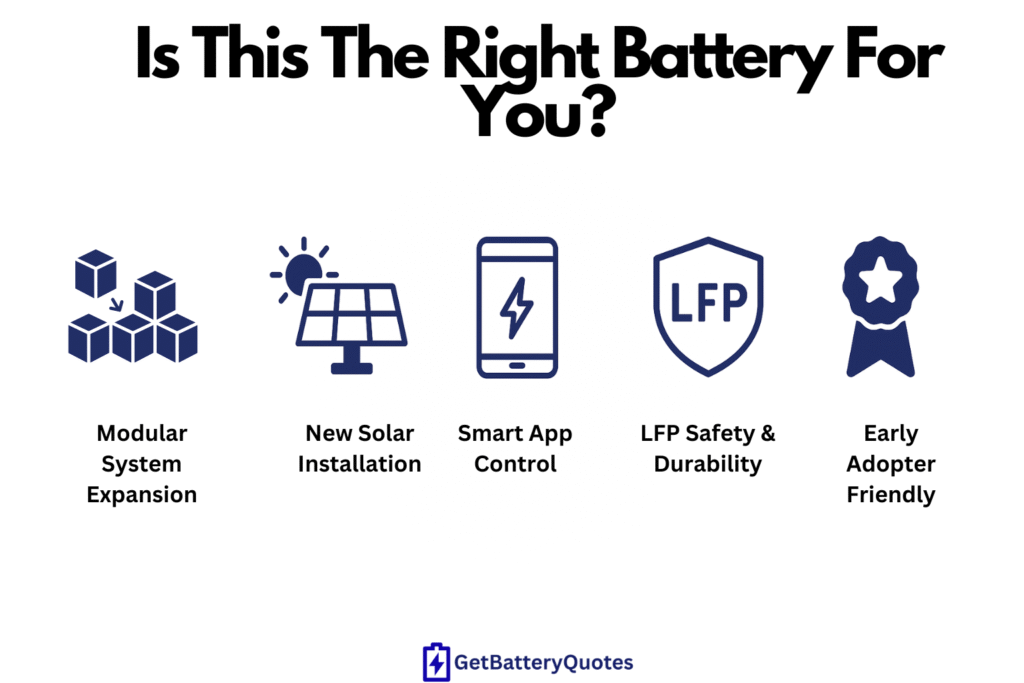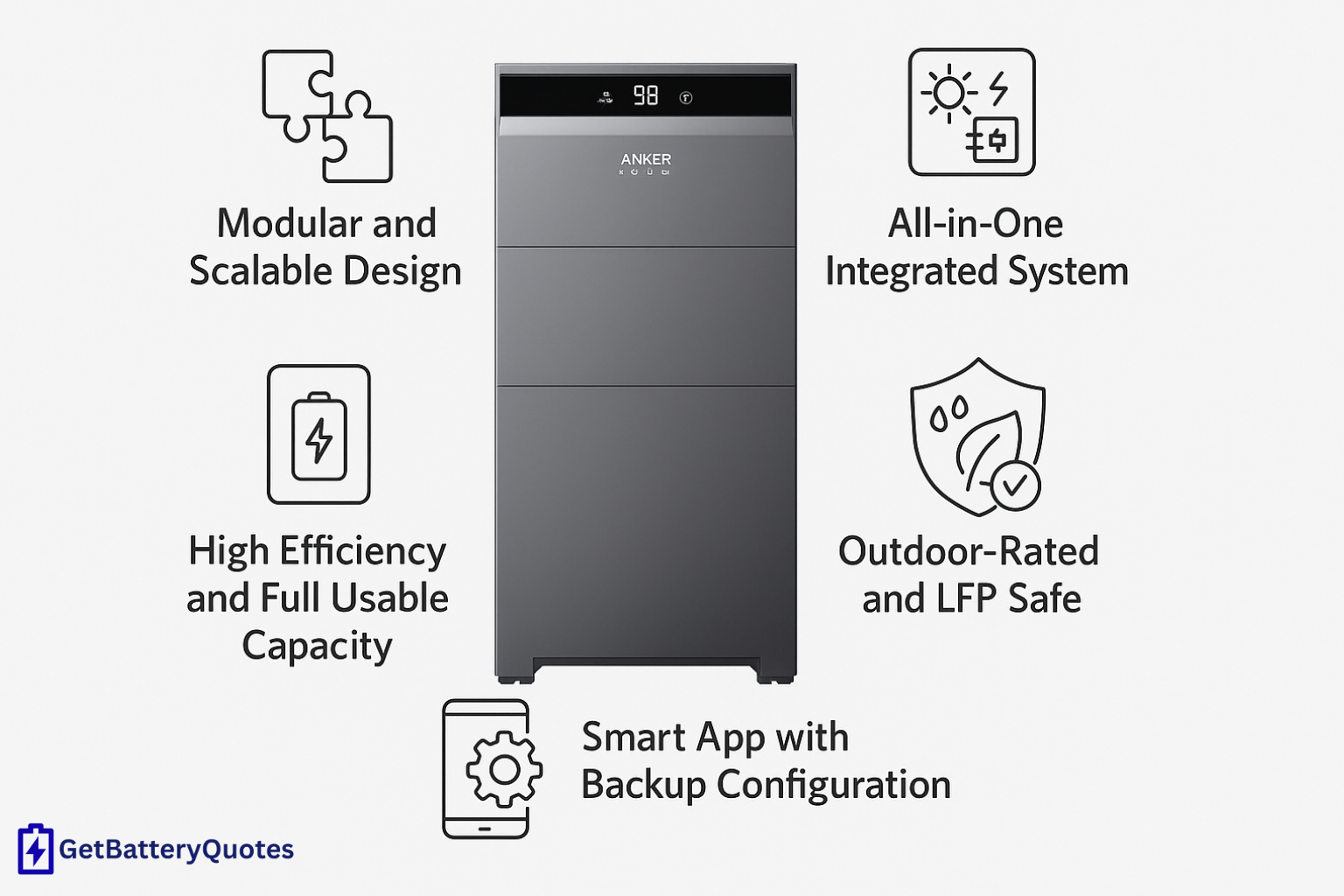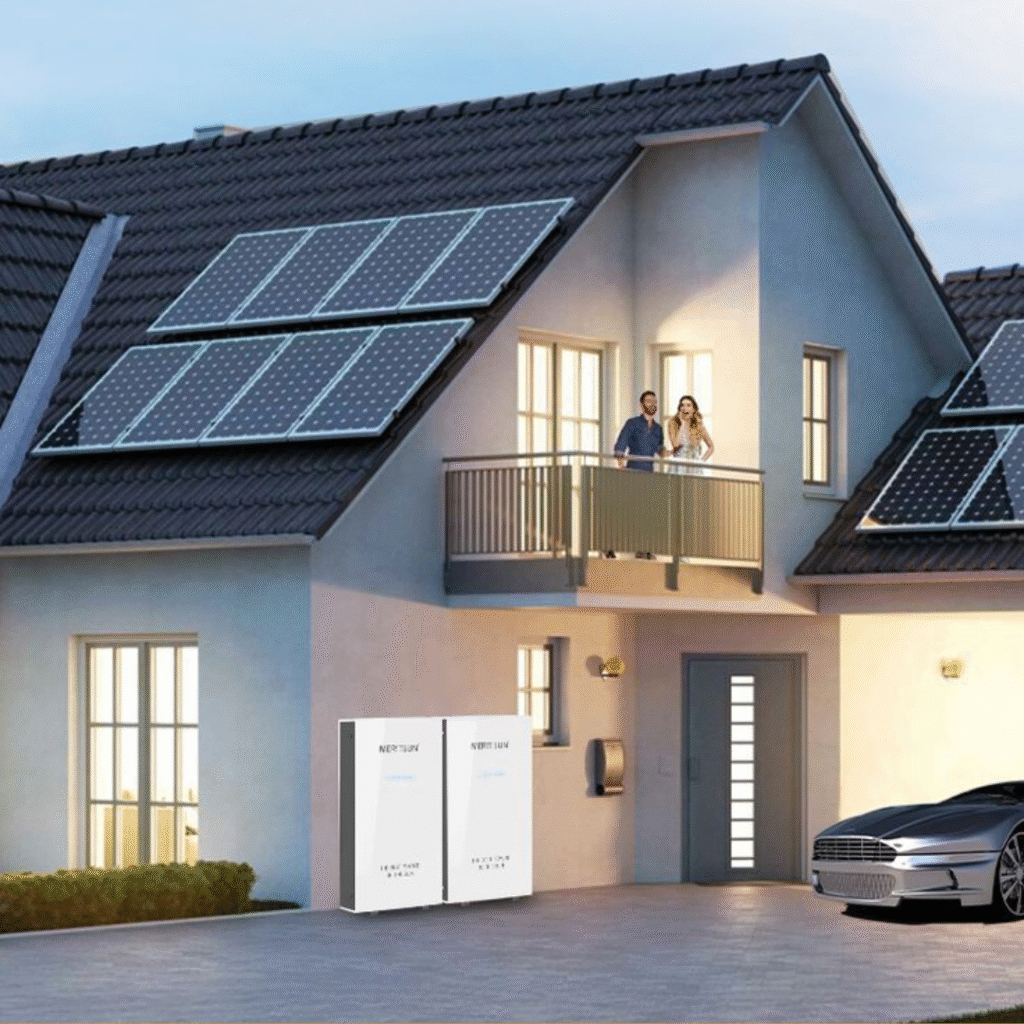Table of Contents
- 1. A Modular Newcomer with Big Potential. But Is It Ready for Australia?
- 2. Quick Pros & Cons
- 3. Anker Solix Evaluation: Performance, Experience & Support at a Glance
- 4. Who Is the Anker Solix Battery Best For?
- 5. About Anker Solix
- 6. Key Specs Snapshot
- 7. Anker Solix Battery Model List (CEC Approved)
- 8. Anker Solix Battery:Pros & Cons in Detail
- 9. Warranty & Support
- 10. Ask Us Anything
- 11. Downloadable Documents
- 12. Final Verdict: Should You Buy an Anker Solix Battery in 2025?
A Modular Newcomer with Big Potential. But Is It Ready for Australia?

Quick Pros & Cons
Pros
- Modular system from 5 to 30 kWh. flexible for small homes or large energy users
- All-in-one design includes hybrid inverter, battery, and smart control in a single package
- High round-trip efficiency (97.5%) and 100% depth of discharge
- IP65 outdoor-rated and floor mountable
- Safe lithium iron phosphate (LFP) chemistry
- Integrated smart app (myAnker) for monitoring, scheduling, and backup configuration
- CEC approved in Australia (March 2025 listing)
Cons
- Very limited track record in Australia. support and reliability not yet proven
- Currently single-phase only. No model for three-phase homes as of mid-2025
- Installer familiarity may be low. Requires early adopter confidence
- Premium brand positioning could impact affordability
Anker Solix Evaluation: Performance, Experience & Support at a Glance
Technical Performance
User Experience
Trust & Support
Overall Score
72%
Best suited for tech-forward homeowners who want a modular battery system with smart controls and are comfortable being early adopters in a new product ecosystem.
Get Upto 3 Quotes
Compare Battery prices from trusted installers and save thousands on your energy storage system
Who Is the Anker Solix Battery Best For?
- Want a modular system that can grow from 5 to 30 kWh over time
- Are installing a new solar + battery system from scratch and want an integrated solution
- Prefer a smart, app-controlled experience with visibility into their energy use
- Value LFP safety, outdoor durability, and full depth-of-discharge
- Are comfortable being early adopters of a new product in the Australian market
- Homes with three-phase power no compatible model currently available
- Buyers who prioritize local support history or installer familiarity
- Those looking for the lowest price per kWh or proven track records in VPPs and off-grid applications

About Anker Solix
Key Specs Snapshot
- Usable Capacity: Modular from 5 to 30 kWh (in 5 kWh steps)
- Battery Chemistry: Lithium Iron Phosphate (LFP)
- Depth of Discharge: 100%
- Round-Trip Efficiency: 97.5%
- Continuous Output Power: 6 kW
- Peak Output Power: 7.2 kW (for short bursts)
- Inverter Type: Hybrid inverter included
- Mounting: Floor-mounted stack
- IP Rating: IP65 (outdoor-rated)
- Smart Control: myAnker App (monitoring, backup settings, usage history)
- Warranty: 10 years or 6,000 cycles (whichever comes first)
- CEC Approval: March 2025 – March 2028
- Phase Compatibility: Single-phase only (no three-phase model currently)
Anker Solix Battery Model List (CEC Approved)
| Model Code | Usable Capacity | Total Capacity | Nominal Voltage | Outdoor Rated | CEC Approved |
|---|---|---|---|---|---|
| X1-B5-H | 5 kWh | 5 kWh | 153.6 V | ✅ Yes | ✅ Yes |
| X1-B10-HC | 10 kWh | 10 kWh | 307.2 V | ✅ Yes | ✅ Yes |
| X1-B15-HC | 15 kWh | 15 kWh | 460.8 V | ✅ Yes | ✅ Yes |
| X1-B20-HC | 20 kWh | 20 kWh | 614.4 V | ✅ Yes | ✅ Yes |
| X1-B25-HC | 25 kWh | 25 kWh | 768.0 V | ✅ Yes | ✅ Yes |
| X1-B30-HC | 30 kWh | 30 kWh | 921.6 V | ✅ Yes | ✅ Yes |
Each model includes a Lithium Iron Phosphate (LFP) battery chemistry and is designed to work with the Solix hybrid inverter platform. Systems are typically installed in stackable floor-mounted format.
Anker Solix Battery:
Pros & Cons in Detail
Pros
- Modular and Scalable Design
Start with 5 or 10 kWh and expand up to 30 kWh over time. This suits households that want to future-proof their energy storage without overcapitalizing upfront.
- All-in-One Integrated System
- High Efficiency and Full Usable Capacity
- Outdoor-Rated and LFP Safe
- Smart App with Backup Configuration
Cons
- New to the Australian Market
- No Three-Phase Support
- Limited VPP and Off-Grid Integration (for now)
- Warranty Backing Still Developing Locally
- Lack of Third-Party Reviews

Get Upto 3 Quotes
Compare Battery prices from trusted installers and save thousands on your energy storage system
Warranty & Support
Warranty Coverage
- Length: 10 years or 6,000 cycles (whichever comes first)
- Depth of Discharge: 100% DoD
- Throughput Clauses: Not specified in public datasheets
- Inclusions: Covers performance degradation and manufacturing defects
Support Considerations
- Anker offers global support across its product divisions, including consumer electronics, but local support channels for home batteries in Australia are still in early stages.
- Installers may be the first point of contact for troubleshooting or warranty claims until Anker establishes a stronger service presence locally.
- No known partnerships yet with Australian warranty agents or service depots as of mid-2025.
Installer Tip
Homeowners considering the Solix X1 should confirm:
- Who handles warranty claims in Australia
- Whether support is available for firmware updates, inverter diagnostics, and system reconfiguration
- If a local distributor or channel partner is backing the installation
We Have Great Answers
Ask Us Anything
Downloadable Documents
Technical specifications, dimensions, efficiency, and inverter integration details.
Full warranty terms including coverage duration, cycle life limits, and service conditions.
Recommended installation guidelines, safety requirements, and compliance notes.
Final Verdict: Should You Buy an Anker Solix Battery in 2025?
Overall Score: 72%
Best suited for: Homeowners who want a scalable and smart home battery solution and are comfortable being early adopters of a new product in the Australian market.


